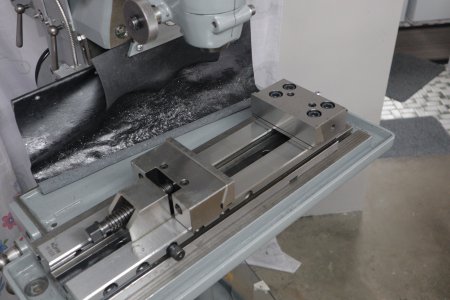Expanding on the microwave transformer a little, the idea is to get a very powerful current flow at a low voltage. There are dozens of videos on the web of "jerry rigged" welders, both stick and spot welders. I have one I set up for resistance soldering. Any of these would serve the purpose.
On mine, I removed the high voltage winding, a given for any such project. Be careful not to nick the primary, a piece of flashing tin will suffice if you're easy with the hacksaw. Once the upper half of the case is clear, use a piece of automotive starter cable or something about three eighths inch diameter over the insulation. Copper is preferable but aluminium wire will work. Three or four passes of the cable through the frame will suffice for a demagnetizer. The output voltage is very low, far below six (6) volts. On mine it is around 2.5 volts. . .
I highly recommend some sort of case, but the big issue is to protect the line coltage taps. Shrink sleeving or at least tape them well. A third wire for the ground plug is a safety issue. Hopefully you'll never need it, but if you do you can thank God you went to the trouble. Any point on the frame will suffice. . .
The "degaussing" coil can be more of the same wire as what was used on the transformer. I have leads made from AWG-6 cable, type "SO" I think. Make a couple of turns, more if you have the extra cable. There is no need at that low a voltage for short circuit protection. Just make the wraps and tape them together so it can be handled. Power on the transformer and slowly remove the coil from the device. Or the other way around if your setup is that way. Five feet or so should be sufficient clearance. It may take several attempts for results, the amount of magnetism and the reluctance of the steel can will affect the degaussing. Some steels (iron content) have higher or lower reluctance.
The effect is the same as using a soldering gun (I use a Weller D-550) to demagnetize a screwdriver. Just a bigger chunk of iron. The contraption will serve quite well without a case but if you intend to keep it handy for welding or soldering, it really should have a case. For consideration, mine outputs several hundred amps at full line voltage. I use a "Variac" on the input to control the heat. The Variac is limited to 7 amps, I just kept adding turns until a "bolted short" approached that limit. I used an analog "Amprobe" to measure the current as I worked. (I'm old school and don't like digital instruments.)
The theory is the same as for an "old timey" color TV with a CRT. It often was a practice to use a majical coil in front of the screen to true up the color projection. That coil was a smaller version of what is suggested here.
.




